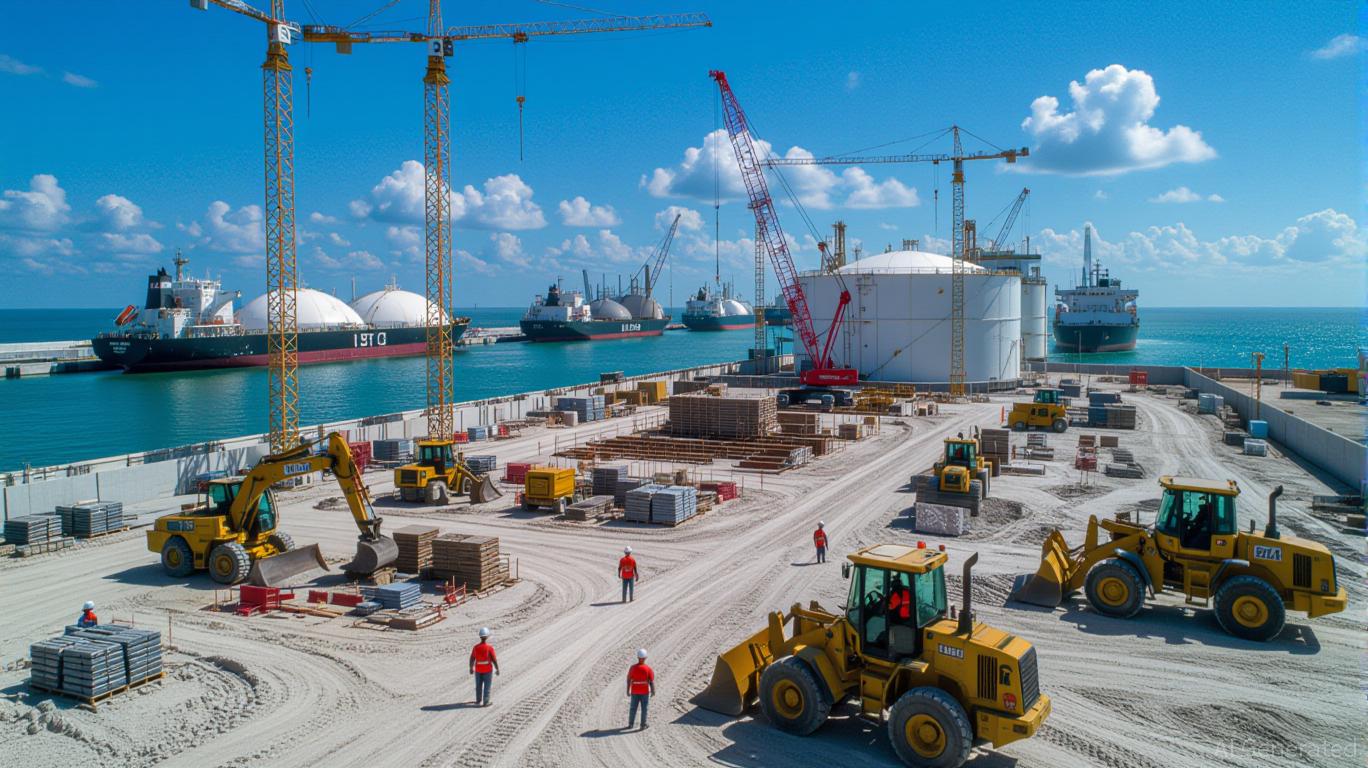In the ever-evolving landscape of global energy markets, strategic capital allocation and risk management have become paramount for companies navigating the transition to cleaner energy. Woodside Energy’s recent $5.7 billion partial sale of its Louisiana LNG project to Stonepeak, a U.S.-based energy infrastructure investor, exemplifies a calculated move to balance financial prudence with long-term growth. This transaction, finalized in April 2025, not only secures critical funding but also repositions Woodside as a more agile player in the LNG sector. For investors, the deal raises compelling questions about its implications for capital efficiency, market positioning, and the broader energy transition.

Financial Prudence and Liquidity Boost
The sale of a 40% stake in Louisiana LNG has injected Woodside with immediate liquidity, with Stonepeak agreeing to cover 75% of the project’s capital expenditures in 2025 and 2026. This offloading of financial risk is a masterstroke in capital efficiency. By securing $1.9 billion in closing payments and retaining a controlling interest, Woodside has effectively reduced its exposure to the project’s upfront costs while maintaining upside potential. The proceeds, combined with a $3.5 billion oversubscribed bond issuance, have bolstered the company’s liquidity buffer to $8.43 billion by mid-2025. This financial flexibility is critical for funding high-impact projects like the Scarborough Energy Project and the Trion Project in Mexico, both of which align with Woodside’s long-term growth strategy.
Investors should note that such liquidity also provides a buffer against short-term volatility in oil and gas prices, a concern as global markets grapple with shifting demand dynamics. The ability to fund operations without overleveraging the balance sheet is a hallmark of resilient energy companies in this transitional era.
Strategic Partnership and Operational Synergies
Beyond the financial benefits, the partnership with Stonepeak brings operational expertise to the table. Stonepeak’s deep experience in U.S. gas and LNG infrastructure—spanning asset management, project financing, and regulatory navigation—positions the Louisiana LNG project for smoother execution. This is particularly valuable in a sector where delays and cost overruns are common. Woodside CEO Meg O’Neill’s emphasis on accelerating the project’s final investment decision (FID) underscores the strategic value of this collaboration.
The deal also signals Woodside’s willingness to leverage non-core partnerships to focus on its core competencies. By retaining a controlling stake, the company maintains operational control while benefiting from Stonepeak’s capital and expertise. This hybrid model—combining internal strengths with external resources—is increasingly common in energy, where the scale of infrastructure projects demands shared risk.
Market Positioning and Energy Transition Alignment
The Louisiana LNG project is a cornerstone of Woodside’s strategy to expand its LNG portfolio, a sector that remains vital in the global energy transition. With growing demand for cleaner-burning fuels in Asia and Europe, LNG is poised to play a bridging role as renewable energy infrastructure scales. Woodside’s decision to prioritize this project—while simultaneously investing in lower-emission technologies—demonstrates a balanced approach to decarbonization.
For investors, the stake sale also highlights Woodside’s commitment to capital-efficient projects. By reducing the project’s capex burden, the company can allocate resources to innovation, such as carbon capture and hydrogen ventures, which are critical for long-term competitiveness. This dual focus on traditional LNG and emerging technologies aligns with the expectations of ESG-conscious investors, who increasingly demand proof of a company’s transition-readiness.
Risks and Considerations
While the deal is largely positive, investors should remain cautious about potential headwinds. The LNG market remains sensitive to geopolitical tensions and regulatory shifts, particularly in the U.S. and Europe. Additionally, the project’s success hinges on the execution of FID and the timely completion of infrastructure. Delays could erode investor confidence, though Woodside’s partnership with Stonepeak mitigates some of these risks.
Investment Outlook
Woodside’s Louisiana LNG stake sale is a textbook example of strategic capital management in the energy sector. By securing liquidity, reducing risk, and partnering with a specialized firm, the company has positioned itself to capitalize on LNG demand while maintaining flexibility for future opportunities. For investors, this move reinforces Woodside’s credibility as a disciplined operator in a challenging market.
The stock’s recent performance—outpacing broader energy indices—reflects market optimism about the company’s strategy. However, investors should monitor Woodside’s progress on the Louisiana project and its ability to execute on its decarbonization roadmap. Those with a medium-term horizon may find the stock attractive, particularly as the energy transition creates new valuation drivers for companies that balance traditional assets with innovation.
In conclusion, Woodside’s stake sale is not just a financial maneuver but a strategic pivot that aligns with the realities of a transforming energy landscape. For investors seeking exposure to a company that prioritizes both capital efficiency and long-term value, Woodside’s approach offers a compelling case study.
